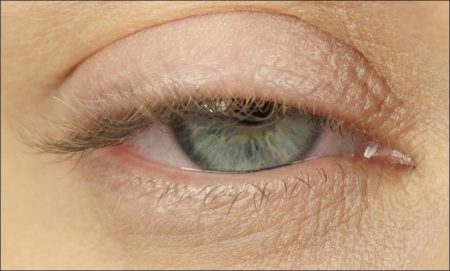The upsides of having relatively hairless faces are fairly straightforward. Less hair means fewer places for parasites to hide, for example, and more exposed skin allows for sweat to more efficiently do its job keeping us cool.
But then there’s the fact that skin is basically clear. While that allows us to easily communicate our emotions and feelings to others it does come with a downside: it is so, so easy for someone to tell when you’re tired.
There’s nothing medically wrong when those bags appear under your eyes, at least not most of the time. But in a 2007 article in the Journal of Cosmetic Dermatology, Brazilian researcher Fernanda Magagnin Freitag points out that while they are “within the limit of physiology,” many patients can become quite “bothered and concerned by it, even relating the presence of dark circles with significant impairment on their quality of life”. Skin-related conditions that can result in psychological or emotional distress are worth exploring, even if they do not represent a threat to health in more traditional terms.
“Dark circles” or “bags under the eyes” are of course not clinical terms and can refer to a wide range of phenomena that result in a similar appearance. The clinical term is “periorbital hyperpigmentation,” or POH, and because it hasn’t historically been a priority for dermatology researchers, there isn’t all that much known about it.
What we do know is that the skin just beneath our eyes is especially thin, making it especially transparent. That makes the underlying blood vessels more prominent, which can make the skin appear darker.
“When someone tells me they have bags under their eyes, I like to actually see them and do an examination,” says Hayley Goldbach, a resident physician in dermatology at UCLA. That’s because thin skin is just one of many possible reasons someone could have POH. “They could mean that they actually have dark pigment under their eyes, they could mean that there’s a shadowing effect, or [they might mean] the prominence of veins that run under that area.”
To tease apart the possibility, Goldbach says she likes to stretch that skin out. If the appearance worsens, then it suggests the underlying vasculature is the culprit. If it gets better, then the problem may lie with the skin’s laxity, or looseness.
Right between the nose, the eye, and the cheek is a groove that dermatologists call the tear trough, because it provides tears with an exit path after they drip from our eyes. “As we get older, everyone loses fat under the surface of the skin,” explains Goldbach, and that makes the tear trough appear even more hollow. It’s something of an optical illusion. The apparent darkness is simply a result of the way that light reflects off the surface of facial contours.
Dermatologists can also use colour to identify the underlying cause of those under the eye. If they appear with a blue, pink, or purple hue that suggests that the colouration comes from blood vessels. If they appear brown, it suggests that there is really is extra melanin in the skin, perhaps the rarest cause of dark circles. But Goldbach says the most common explanation for the appearance of dark circles under our eyes is structural, simply due to the loss of subcutaneous fat we all endure as we age. And that, she says, is what often makes people with bags under their eyes look tired.
But these explanations can’t really account for the more transitory sort of under-eye bags, the sort you get when you just haven’t gotten enough rest.
“Another thing that can lead to bags under your eyes is adema, or swelling,” says Goldbach. And sometimes just after waking up the skin under our eyes is puffier than normal. A salt-heavy meal can also lead to puffy eyes. So if you gorge on French fries before falling asleep, you could wake up with bags under your eyes, but the underlying physiology might not have anything to do with fatigue itself.
It’s also been suggested that exposure to ultraviolet radiation exacerbates POH, as could stress, alcohol, and smoking – though according to dermatology researcher Rashmi Sarkar, writing in a 2016 article in The Journal of Clinical and Aesthetic Dermatology, none of these claims have been scientifically substantiated. There’s more empirical support for the role of allergies, which can cause folks to rub their eyes or to cry, at least when it comes to brief, transient occurrences of POH.
Because it is so temporary, and due to the overwhelming number of underlying causes, and also because most dermatologists think of it as primarily a cosmetic or aesthetic issue, there’s just not enough scientific research to provide any satisfying information about useful treatment options.
Bleaching creams have been marketed for dark circles, as have chemical peels and even laser therapy. Acids have been derived from fungi and extracts have been taken from pear trees. Then there are substances that can be injected into the skin to act as fillers, and there are surgical options as well. One researcher even tried subcutaneous injections of carbon dioxide once a week for nearly two months, and found modest success.
Some researchers have tried applications of vitamin C, while others resort to options that might not actually help but are smart anyway: sunscreen and UV-coated sunglasses. Still, Sarkar says, “even a mild-to-moderate improvement in appearance can cause an improvement in the quality of life of the patient”. Until more evidence is available, though, another option may just be to learn to love those dark lines as distinguishing features of a wiser face.
Visits: 105



